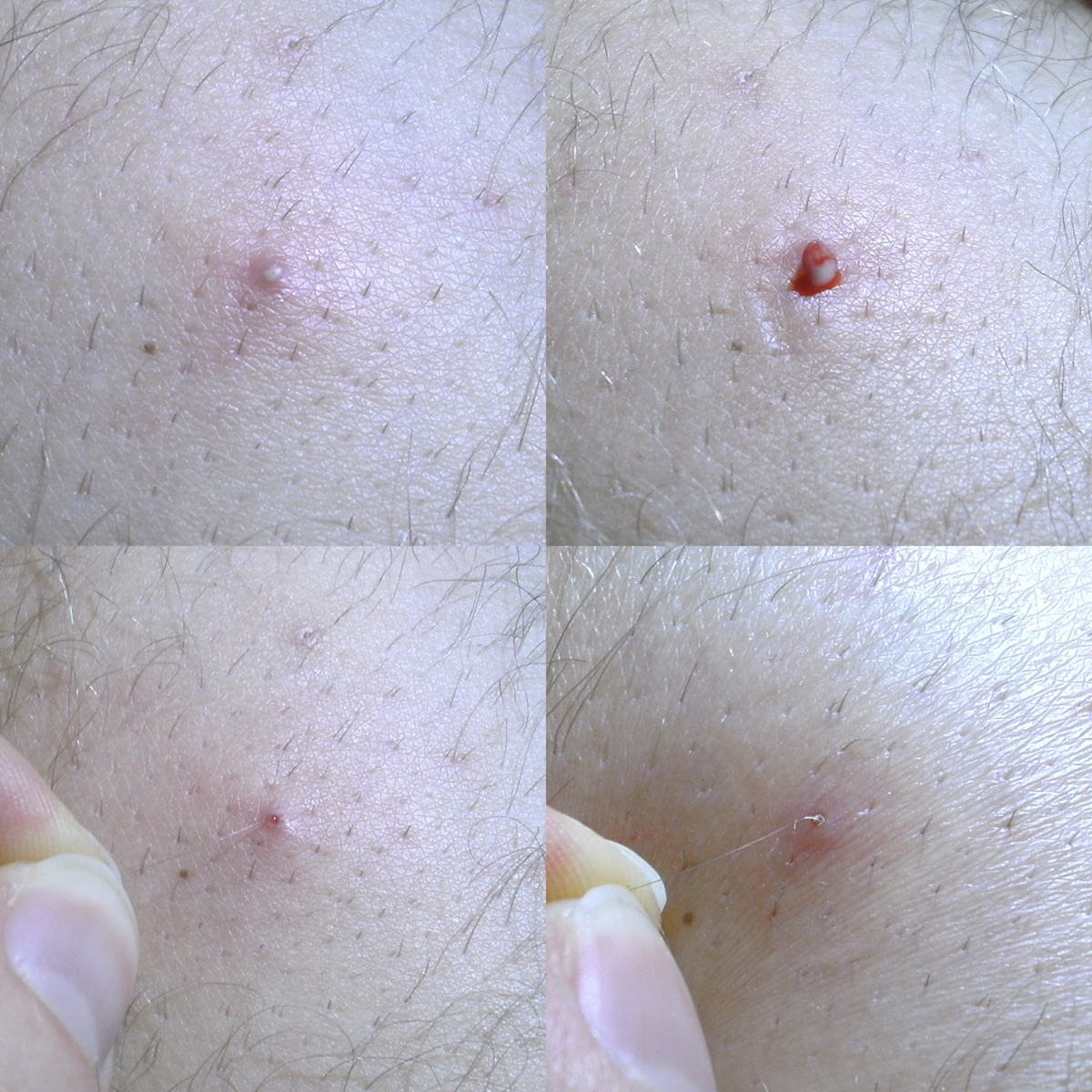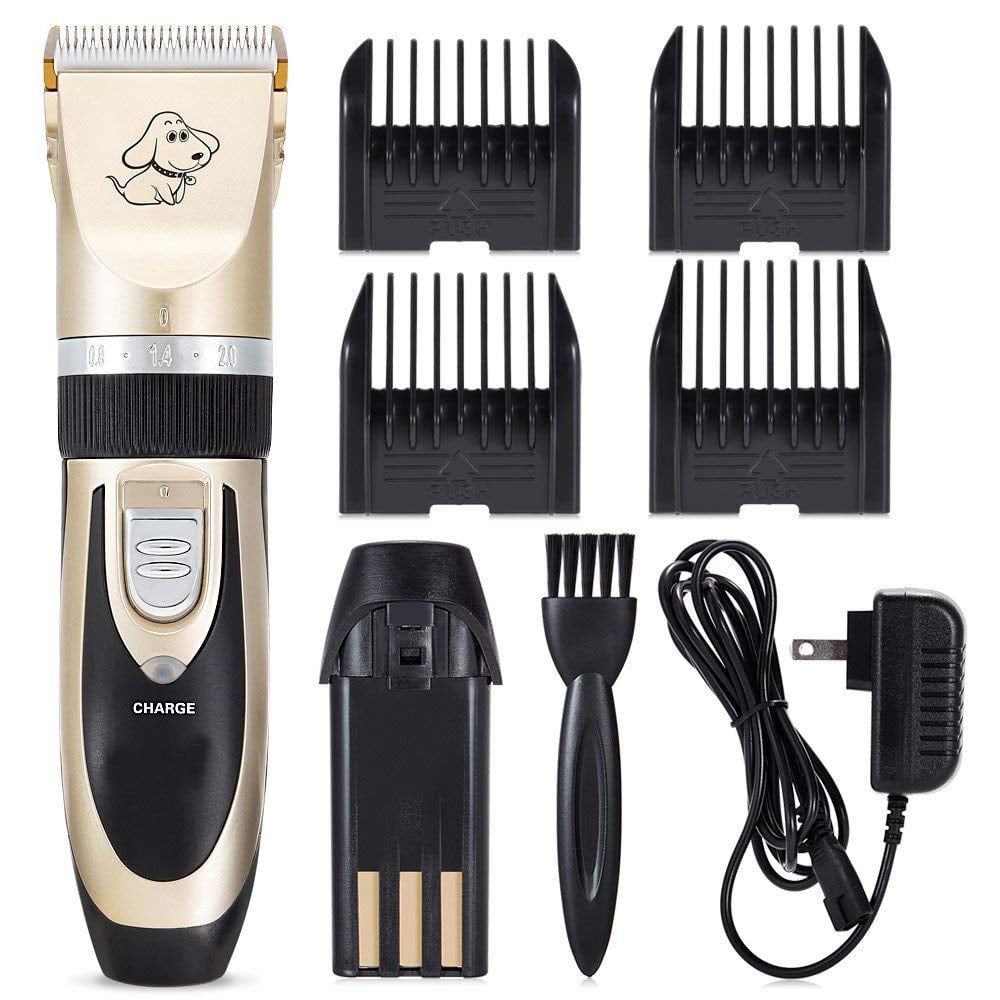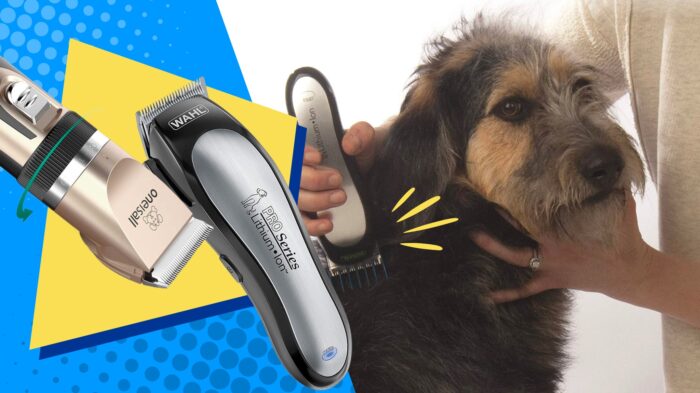Table Of Content

“If you have an ingrown that’s red, hot, swollen or getting worse, or if you have a fever,” it is likely infected and you need to get to the doctor. “Most of the time when I see this in my office, the person says, ‘I had an ingrown and tried to pop it and made it worse,” she says. Occasionally, infections can turn into an abscess and need to be drained. We can all agree, it's best not to get ingrown hairs in the first place, so here's how to prevent ingrown hairs — and what to do if you wind up with one or more. Curly hair also lends itself to becoming ingrown, which explains why the bikini area is particularly prone.
Use the Right Type of Razor
Aside from being annoying, most ingrown facial hairs are rarely a cause of concern. In this case, you may need an antibiotic to treat the infection. An ingrown facial hair occurs when hair that’s been shaved, waxed, or tweezed curls and grows sideways into your skin instead of toward the surface. They can also happen when dead skin cells clog hair follicles, forcing the hair to grow at a different angle under your skin. The odds of having ingrown hair increase if your hair is naturally curly. To recommend the below ingrown hair treatments, we chose products that dermatologists recommend, we’ve used ourselves or are highly rated and meet expert shopping guidance.
Things you can do to treat and prevent ingrown hairs
Ingrown hairs are common among people who shave, especially those with curly hair. If that’s not an option, try different shaving techniques to see if they help. Pseudofolliculitis barbae doesn’t always require the help of a healthcare provider. If your ingrown hairs bother you or keep coming back, reach out to a board-certified dermatologist to discuss how you can prevent them or treat related symptoms. You may have a higher risk for ingrown hairs and related infections if your hair is naturally coarse or curly. These hair types are more likely to curl back into the skin when growing out after hair removal.
Use the right razor
If they persist, recur, or are severe, consider speaking with a doctor. Infected ingrown hairs can be uncomfortable, but most clear up on their own in 7–10 days with good hygiene. If you shave or wax with any sort of regularity, there is a 97.6 percent chance you've had an ingrown hair, one of the most annoying (and painful) beauty problems. What if you’ve tried home remedies, and the ingrown hair just won’t go away? The ingrown hair may eventually make its way out of your skin. There are also situations where the hair will continue growing under your skin.
Shaving a dry face is a surefire way to develop ingrown facial hair. As a rule of thumb, keep your facial hair as lubricated and moist as possible. Prior to shaving, apply shaving cream and water to your face. This alleviates dry, brittle hair, thus allowing you to remove hair with a single stroke. When you shave, you cut hair level with the skin, so it’s already above the surface.
Oral or topical antibiotics to both decrease inflammation and treat any skin infection. There will be a painful bump and swelling, and you may notice pus. Doctors treat staph infections with antibiotics to prevent other serious complications, such as a blood infection. A doctor may prescribe oral steroids, antibiotics, or other medications if the infection has a risk of becoming severe or spreading to the blood and internal organs.
Best for Razor Bumps
Alternatively, your doctor might prescribe topical treatments like retinoids, which help reduce skin hyperpigmentation and remove dead skin cells. They also might prescribe steroids, which reduce inflammation and swelling. Hair removal is the root cause of ingrown hairs, since they occur when hair starts to grow back and curves to burrow into the skin.
Home remedy #1: Over-the-counter ingrown hair products
They happen when the skin blocks the emergence of a hair from the follicle, or when a hair grows back into the skin. Squeezing an ingrown hair will increase the risk of infection. If an infection is present, squeezing the bump may worsen it. Never pick or pop an infected ingrown hair, as this also increases the risk of complications. Staphylococcus (staph) infections can occur with an ingrown hair.

Can You Remove Deep Ingrown Hair?
Ingrown hair cysts happen when a hair follicle gets blocked, and the hair grows into your skin instead of out. You should never pop an ingrown hair cyst because it can cause infection and scarring. The cysts may go away on their own, but if they hurt, look red, or ooze pus, see a healthcare provider for treatment. This treatment also includes witch hazel, papaya, and aloe leaf extract to help calm the skin down and reduce the risk of developing razor bumps and redness. Simply apply a small amount of the gel to the affected area in the morning and evening to help prevent and treat ingrown hairs. The instructions also recommended applying a moisturizer after use too, because the ingredients can dry out your skin over time.
An ingrown hair is one that furls up beneath the skin, because for some reason it has become trapped, as opposed to sprouting through the pore opening. As Dr. Malik states, it can be a natural occurrence when dead skin cells trap a newly sprouted hair, or caused by a compromised shave regimen. The site can even become infected if bacteria gets trapped inside there, too.
The No. 1 bestselling Tend Skin Solution is on sale at Amazon - Yahoo Life
The No. 1 bestselling Tend Skin Solution is on sale at Amazon.
Posted: Mon, 31 Jul 2023 07:00:00 GMT [source]
In severe cases, you might need chemical peels, photodynamic therapy (light therapy), or laser therapy. Preventing ingrown hairs can decrease your risk of related infections. A doctor will usually assess an ingrown hair infection by looking at the symptoms and asking about your medical history.

But waxing, tweezing, threading and epilating removes hair from the follicle, which is deep underneath the skin, Zeichner says. Hair then has to grow back from that follicle and make its way through the surface of the skin. If that process does not happen correctly, the free edge of the new hair can become trapped, grow into skin and result in an ingrown hair, he says. Those with very sensitive skin may not be able to tolerate BHAs to close hair follicles after shaving. Witch hazel is an alternative ingredient that does the same job, but is gentler on the skin, Weinstein says.
Keep reading for our complete guide on how to get rid of ingrown hairs once and for all. It can be used in the shower (just before adding conditioner) or applied to damp skin right after getting out of the shower. It is recommended to apply a quarter-size amount to the impacted area and rub it into the skin in a circular motion. While you should use this product as needed, be aware that overuse (without a moisturizing conditioner) can dry out the scalp. The Bliss Ingrown Hair & Razor Bump Eliminating Solution can be applied daily using a cotton pad to any area where you frequently develop razor bumps.













